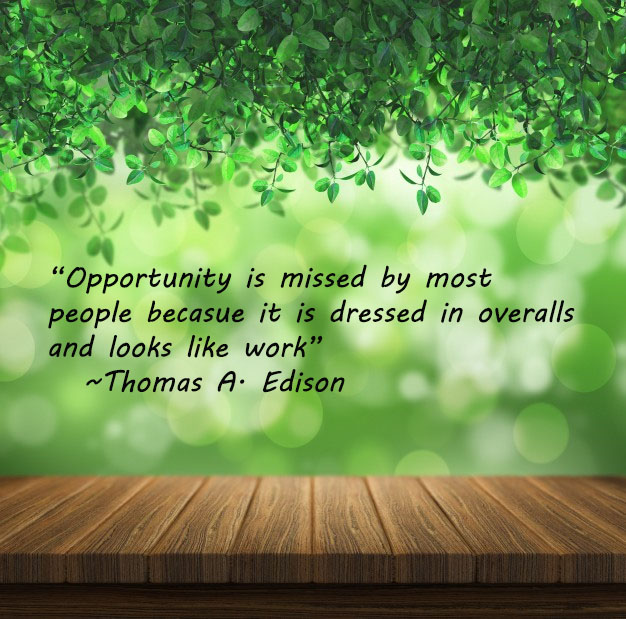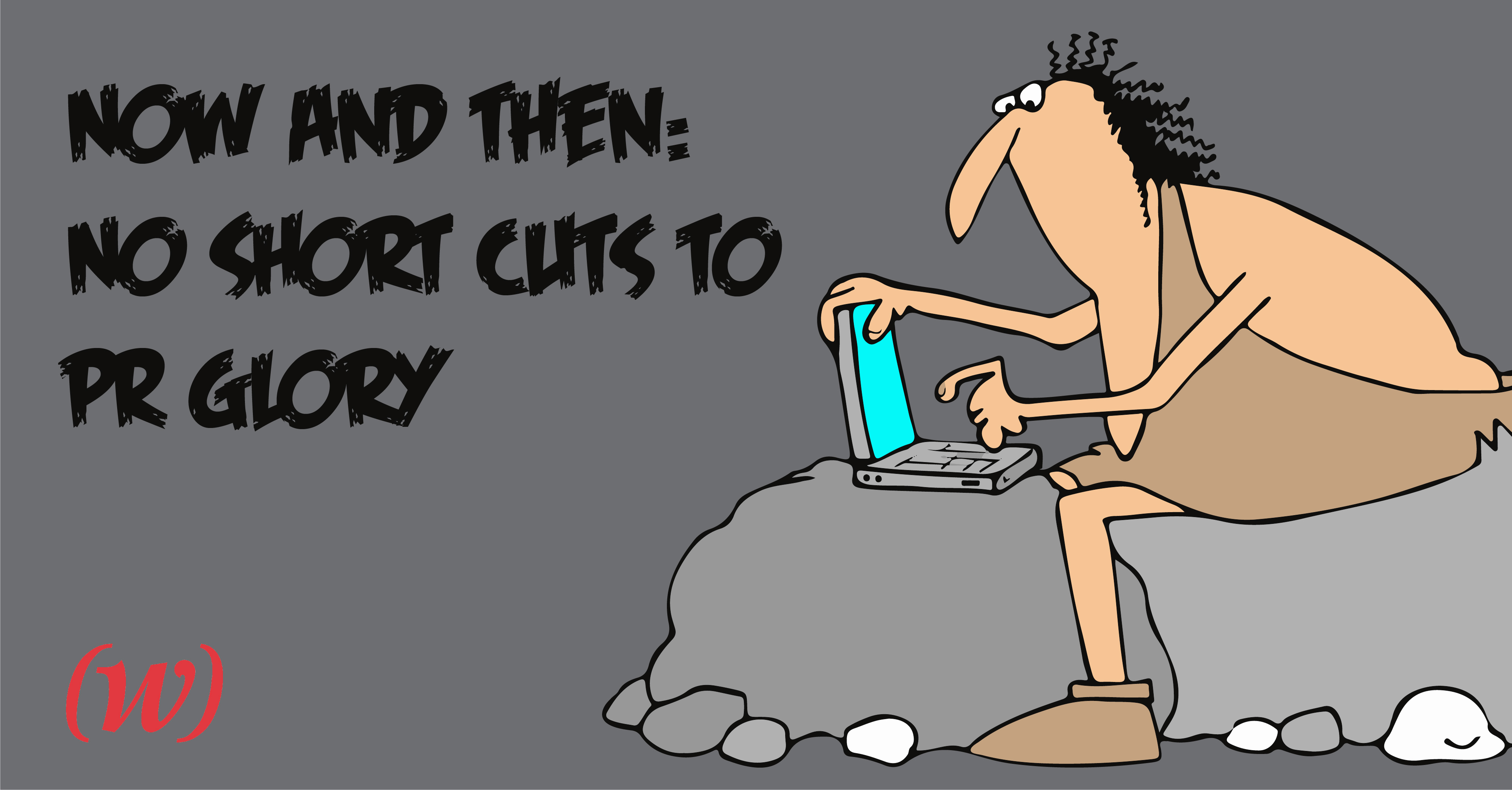Tailored communications strategies that consider audience, geography and industry are essential for impactful engagement and global brand success.
Continue readingNo Shortcuts to PR Glory, Then or Now
By Julie Wright—President and Founder
Twitter: @JulieWright
How PR Worked Before the Internet…
I started out in PR before the Internet or email. It was the era of fax machines, the Yellow Pages and 400-page media directories that you combed through to research and build your media lists. There were few shortcuts on the way to mastering your PR skills, but in some ways, all of today’s technology and automation tools might actually be shortchanging entry-level PR people and getting in the way of developing PR fundamentals.
Back in the day, once you had your list built, you then had to call each reporter until they picked up the phone and then use your verbal skills to hold their attention more than eight seconds to pitch your story. Those calls helped you develop a thick skin, fast. That real-time feedback taught you which approaches worked or didn’t.
Unfortunately, in today’s email environment, you’ll never really know what they loved or hated about your pitch. (Unless you follow @smugjourno or @DearPR to monitor Tweets from journalists losing their s*** after being addressed with the wrong name for the 10th time in one day, sent another off-topic pitch, distastefully news-jacked or sent a 120 mb attachment.)
In the pre-email era, entry-level PR pros had to work the phones but that process made us better, faster.
We had another tool beside the phone. It was called the fax machine. Part of paying your dues was standing over one feeding it hard-copy press releases with your fingers crossed, hoping to hear the modem answer. (If you don’t know what a modem sounds like, it’s kinda like a DubStep drop.) That sound let you know that your brilliant press release was transmitting.
If you were sending a fax to a busy newsroom, you could often expect repeated busy signals and multiple attempts to get your press release through. Faxes could only be sent one at a time. You could punch in several fax numbers, but they’d be delivered sequentially and not simultaneously.
Think about that, for a moment.
You, literally—and I mean literally–experienced the sensation of your pitch colliding and competing for bandwidth with other pitches. The idea that your pitch was one of hundreds being sent to an outlet or reporter was not just a concept. It was something you actually heard and saw.
Anyhow, damn. Those days could be a real grind. Some labor-intensive, inglorious work. Like walking uphill both ways to and from school. But it was just what you had to do so you did it.
So, here’s my point: While the tools may have changed, I honestly do not think that the fundamentals have.
PR still requires an awful lot of legwork to do right and over the past quarter century, I have found that there is no substitute for that hard work—particularly as you are starting out. Generating a Twitter following, mastering Facebook’s algorithm, researching blogs for your thought leadership project—it’s a different grind, but to succeed you’ve got to do the work.

The practices I learned in the early 90s as an entry-level Gen Xer gave me sound fundamentals. It was a methodical process—detailed, diligent and it kept you close to your media contacts. You worked hard to find each contact and cultivate it. You knew the value of each contact and sent your pitches out into the world with each recipient in mind.
If I wanted to target my client for a radio interview, I had to listen to that radio show. If I wanted a trade or consumer magazine to feature my client’s project, I had to read the magazine. There was no website to consult or Google to search.
You had to be dialed into your media list, totally aware of who each contact was and why the hell they’d want to do a story on your news. I think this is one of those basics that has been lost in the race to automate our work, and it is the bane of the remaining working journalists who are inundated with off-topic email pitches. It’s also the bane of PR professionals who know that it takes time to do this job right but get pressure from clients who think PR is just distributing press releases to massive lists.
What Can You Do Today for Maximum Career Growth & Success?
What would happen to your pitching skills and PR instincts if you adopted these old school practices. What if you voraciously consumed the very same media you were expected to earn coverage in? What if you approached every single media contact on your media list like a wedding guest—knowing their background, your relationship to them, whether they’d want the ribeye or the vegetarian option and who they’d want to sit with?
I tell you what. You’d be successful. You’d be a rock star.
In today’s environment of cheap, plentiful and immediate information, taking pains to research and document each entry in your media list probably makes you feel like you’re doing it wrong.
Stifle that impulse. Take the time. If you have a passion for communications and telling great stories, then focus on your fundamentals. Do what might feel like drudgery. It’s called paying your dues. We all did it. If we wanted it, then we did it.
So if that’s you, don’t miss the opportunity to shine because it looks like hard work. 
Put that extra care and attention into your work. Invest extra time in your day for attending a webinar to build your knowledge. Spend a little extra time every day reading up on your industry and talking to the more experienced people on your team about what you’re learning to get their take and advice.
And for god’s sake, show up. Network with journalists, other PR professionals, peers and business leaders. Volunteer on a committee so you can practice your leadership skills outside of the office to get more confident contributing during team and client meetings.
It may sound old-timey but work hard, pay your dues, take chances with your new knowledge and you will get noticed and rise quickly. I assure you, don’t be afraid to do these things for you will have one of the most exhilarating and rewarding careers imaginable.
Values, Experiences, & Beliefs: Understanding Your Audience
By Grant Wright, CEO
It’s interesting to me that some people seem wired to presume the worst or best in someone, no matter the actions of that someone. Standing on opposite sides of a big ‘6’ laid on the ground, two people will see the same thing but think differently. One sees a six, the other a nine. Both are right, but both could be adamant the other is an idiot.
When developing a position, we rely on three things – our values, experiences and beliefs. Values – the principles, standards and qualities that guide our decisions and the way we live our lives – are formed starting in childhood. They influence our judgment and, relatively speaking, over time become deeply set within us. Changing them is like changing the course of a supertanker by a rubber dinghy pushing on its side.
Experiences, too, are even further on the spectrum of being unchangeable. While we can later reinterpret the experience perhaps with a different lens of new information, the factual experiences themselves are set like values and not within our control.
Beliefs, on the other hand, are within our control. For example, whether you choose to believe the worst or best in the current presidential election, chances are you’ll be right, or at least think you are. While values and experience are relatively set, it’s beliefs we seek most to influence.
At (W)right On, we’re often heard saying ‘before communication starts, know your audience’ and ‘understand your goal of the particular communication.’ Is it to inform? To change an opinion? Cause an action? And this brings us back to understanding the audience’s values, experiences and beliefs, the last of which you may seek to change. But how to do this?
1. Research!
Before we begin engagements, we’ll often tell new client partners that they should expect to see fewer overt outcomes in the earliest days as this period should allow for behind-scenes research if not already conducted. It’s important to understand the target audience demographic and its alignment, or not, with the given product or service. Trying to communicate the merits of skateboards to senior citizens is like trying to sell retirement packages to 15 year olds. Our goal with research is to ensure communication programs are first accurate before they’re precise.
Creating a fake ‘ideal’ customer persona; studying competitors and how they connect with their audiences you wish were yours; monitoring social media discourse; conducting a survey and meeting one-on-one with members of your target audience are all ways to help know your audience better.
2. Strategy & Tactics
From there, strategy can be developed and tactics deployed to influence beliefs. These might involve bringing the person around the table to see the 6 or 9 from the other’s point of view; modifying the skateboard to a scooter, or the retirement package to an education package; or engaging influencer communications as part of a pull strategy. If we understand our audience, their values, experiences and beliefs, we can then develop a strategy that they are more likely to respond to.
3. Measurement
…a sticky word in public relations but absolutely essential. If your strategies don’t deploy feedback mechanisms and measurable parameters, how will you know if your strategies and tactics to shape beliefs are effective? Some of these parameters might be readily observable – social media statistics, share of voice, top of mind awareness, increased sales demonstrably linked to a specific campaign – while others like brand valuation measurement are less so. At (W)right On, being able to measure and then hone our efforts for best effect are so important that we’re certified by the Association of Measurement & Evaluation of Communications (AMEC) based in London, UK.
4. Close the Loop
With research, intentional strategy, tactics and measurement, closure for best effect comes by not being rigid in approach. Sometimes a communication program will begin with one strategy perhaps even influenced by best practice or success from another industry, but then adapt and become even stronger with new technology or information gained from effectiveness assessment. Some call this ‘continuous improvement’, but really this is just the machinery of a good communication program at work. More broadly, this is also reflective of communication industry evolution for those who keep up.
At (W)right On, we know perspective and context are key in communications, just as are continuous learning, new technologies and an open mind. Whether people see a six or a nine, both are right. Now that that’s settled, where do you go from there?














 Grant Wright
Grant Wright Corie Fiebiger
Corie Fiebiger
 Shae Geary
Shae Geary Phelan Riessen
Phelan Riessen Katrina Early
Katrina Early Hamish Marshall
Hamish Marshall